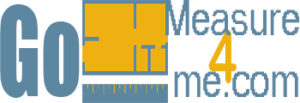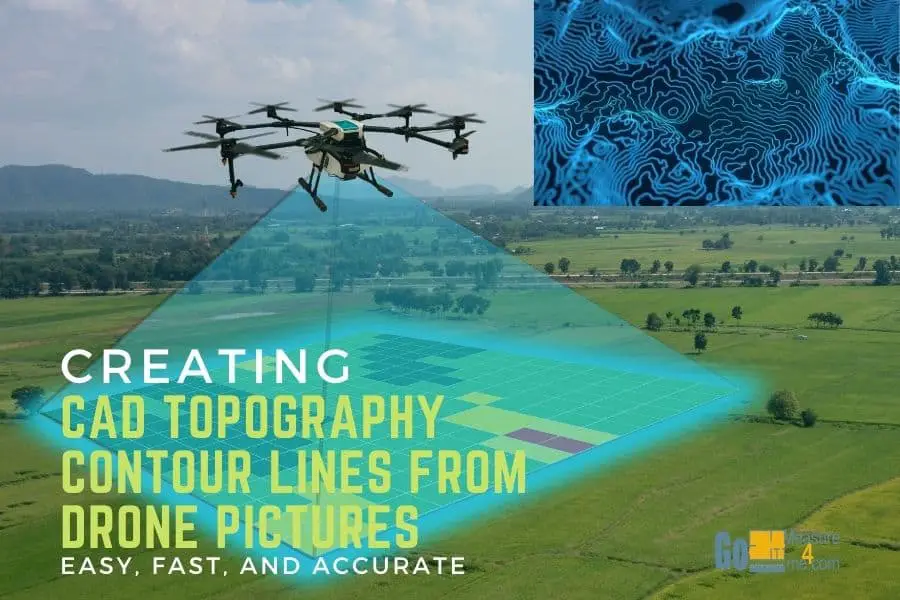I am using Drone to make Topography quite frequently in my projects. I am using this for site study, land volumes estimates, etc. Using a drone even inexpensive one like DJI Spark or it’s newer version DJI Mini 2 gives excellent results. And the process is quite fast, easy and inexpensive.
To make accurate topography of your terrain all you need is the drone, Autodesk ReCap Photo, Autodesk 3ds Max and Autodesk AutoCAD or Autodesk Revit. You can get all those programs in suite to save some money.
Table Of Contents
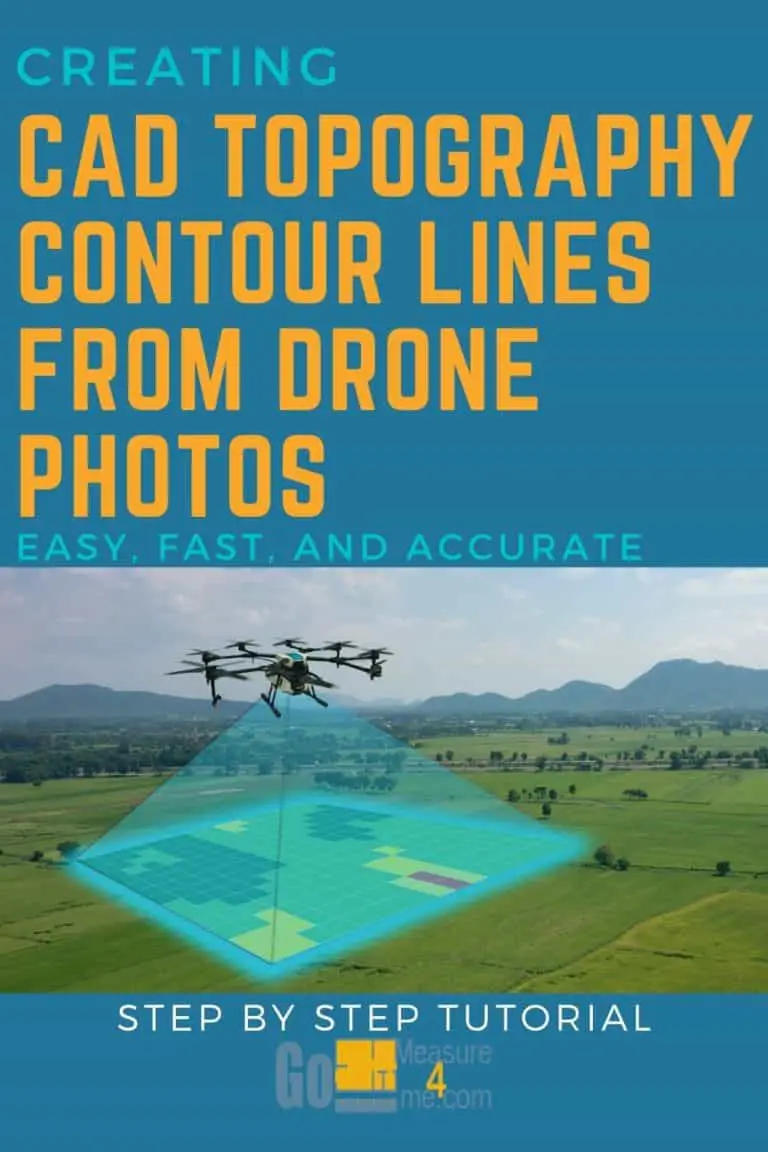
Taking Proper Pictures
If you are an inexperienced drone operator, it is good that you take some time to try your drone before you take it to the field to take pictures. Set your drone to take pictures in the best quality.
When you take pictures with your drone make them overlap by 30% on each side (see the Picture #1).
For greater terrain detail it is better not to fly too high. When you fly on lower altitudes be sure to not have accidents with trees or the electric posts. It is better to fly over them. Believe me, it happened to me.
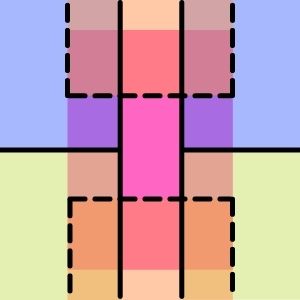
Downloading Pictures Into Autodesk ReCap Photo
Once you have taken your pictures the next step is to download them into ReCap Photo. This is the Autodesk photogrammetry service started under the name of Memento few years before.
Once the pictures are downloaded into the Autodesk Cloud, you can erase pictures you don’t need before wrapping them for processing. The processing can take almost no time at all, but most of the time Autodesk servers are quite busy and it can take up to few hours depends on how many people submitted their stuff to process.
Once your terrain is processed it will appear in your desktop, and it will look something like this:
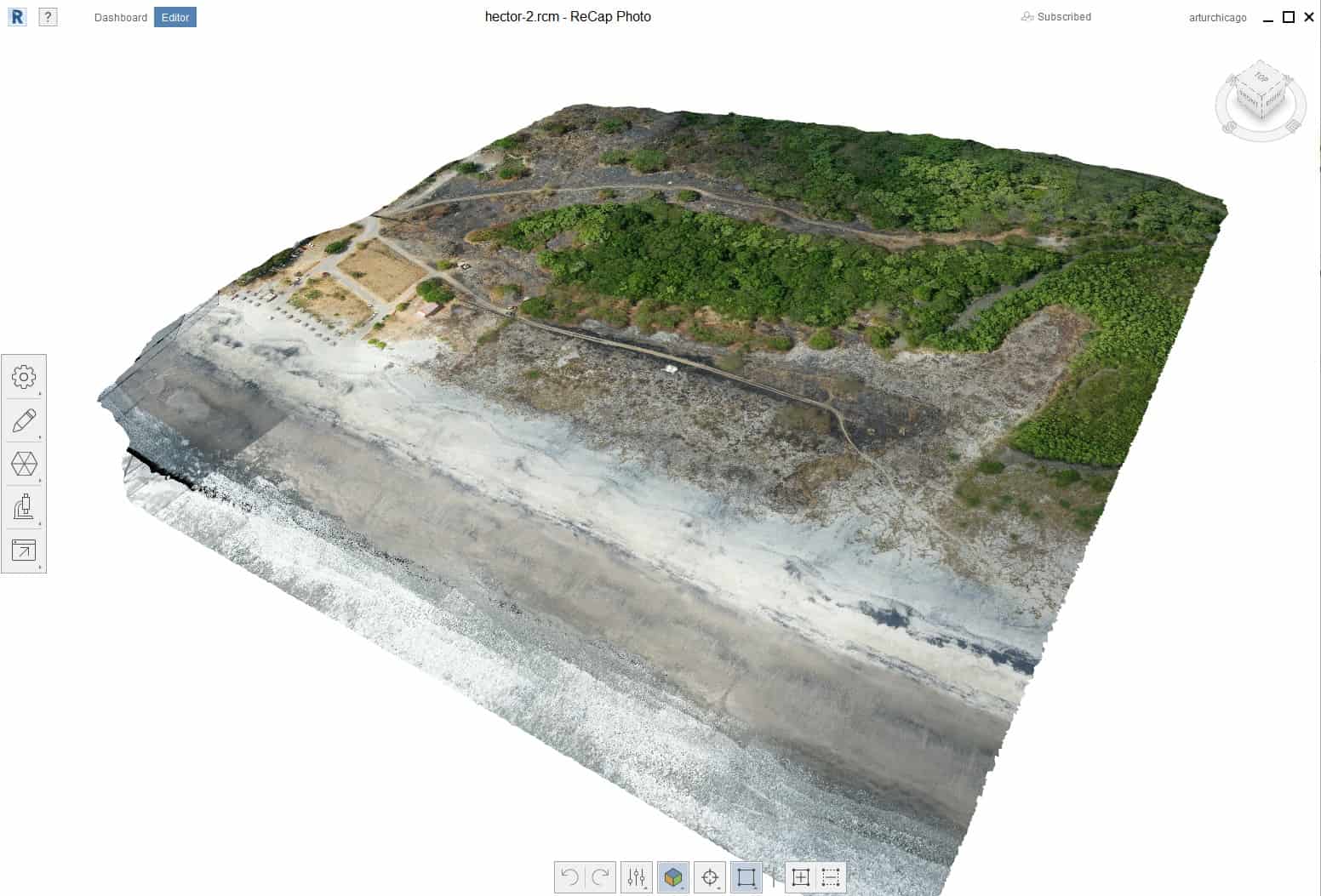
When you orbit using the Cube in the right top corner you can actually see the 3D geometry of the terrain and the objects on the terrain, like in the case of my beach terrain in Panama:
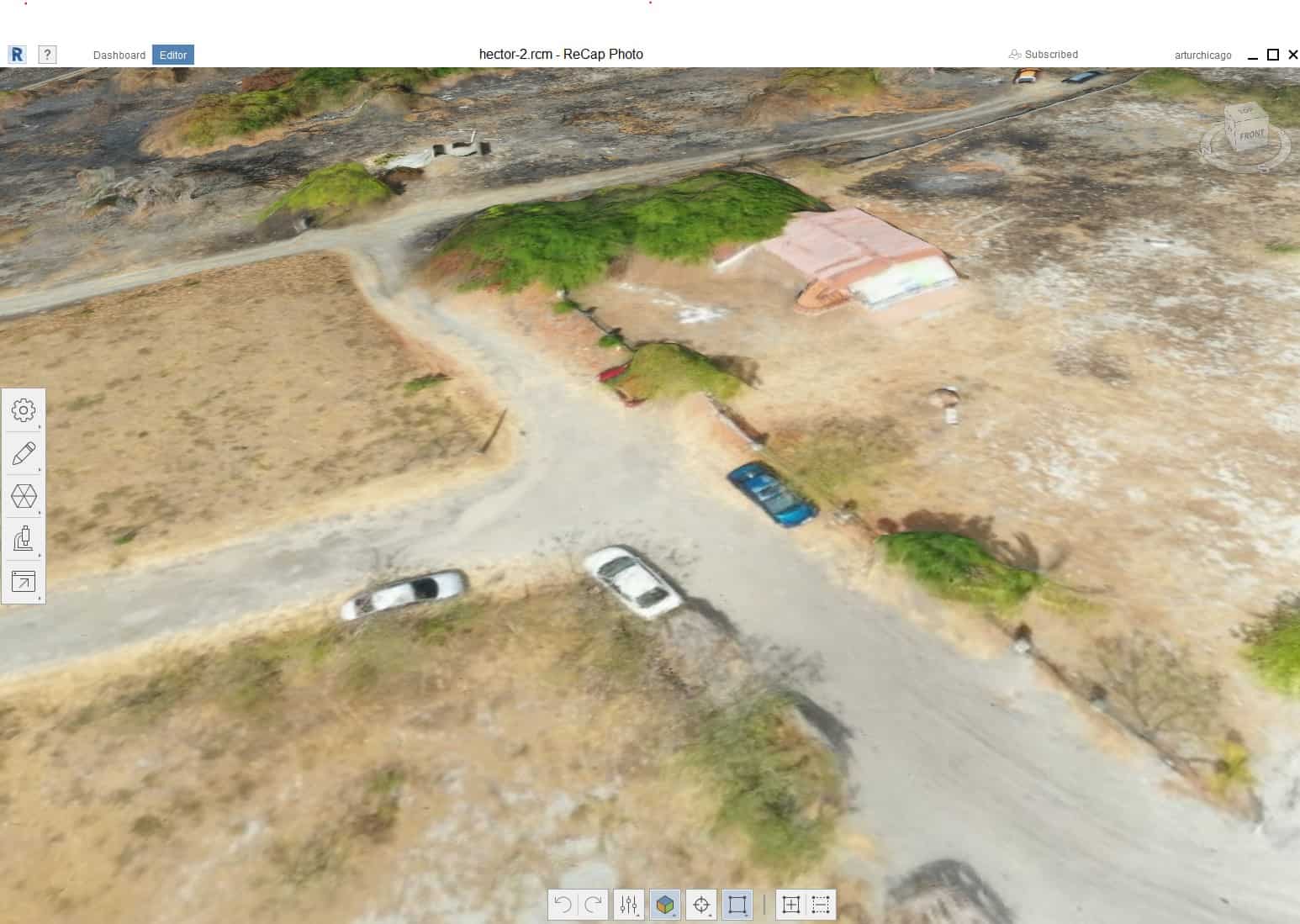
The terrain is made by the software automatically up to real-life scale, you don’t need to worry about that. It is because it uses GPS location saved by the drone in the pictures.
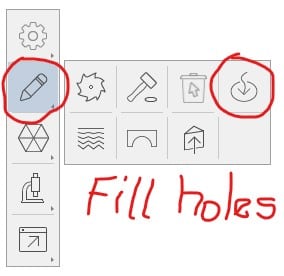
If your terrain contains trees, I would cut them out them using the tools available in ReCap Photo and patch the holes using also automatic hole Fill Holes tool available in ReCap Photo.
If you leave them, they will cause a problem when generating terrain contour lines later on.
You don’t need a Municipal Permit to remove trees in ReCap Photo :-).
Once you are happy with your terrain export this terrain to your hard drive as a .fbx file. When exporting the file you can set the triangulation of the surface option. I usually set triangulation to be 30% – 50% less than the original.
By trial and error method I have noticed that bringing down triangulation up to 70% – 80% works fine in most cases.
You don’t need your terrain to be triangulated to the maximum levels. It will process much faster if it is a little bit less triangulated.
While exporting, see which settings works best with your hardware without loosing the terrain contour quality.
Once you ready, hit Export and your file should be ready in few minutes.
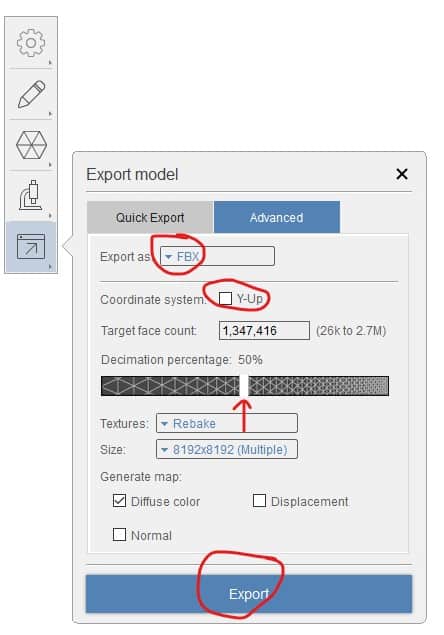
Converting Your Terrain Into Contour Lines
By this point you have a digital shell of your terrain saved on your computer in .fbx file format. Now open your 3ds Max software and drag over your .fbx file in Perspective View window:
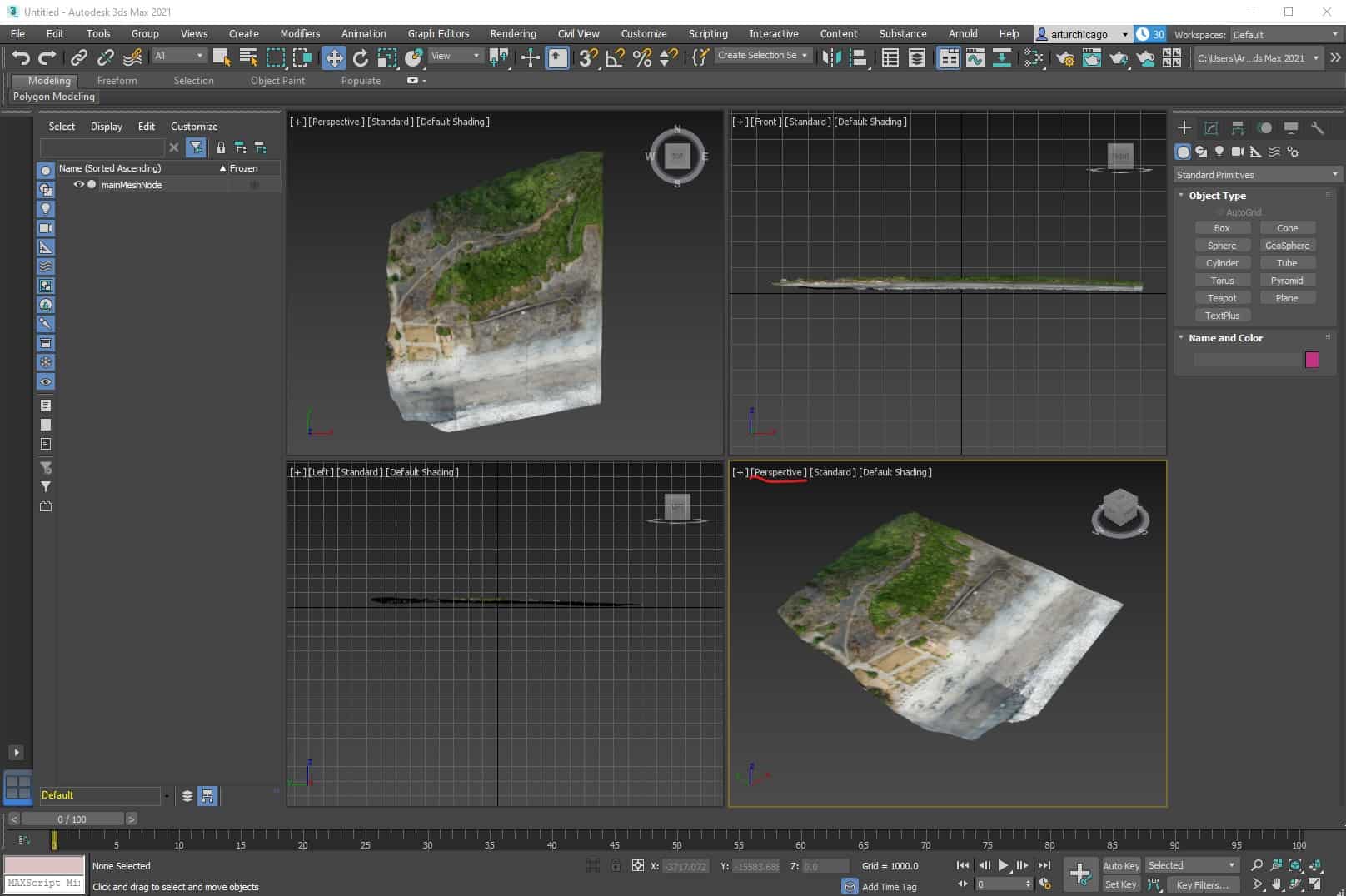
And just like that, your terrain is in 3ds Max. It is that easy because each product is made by the same company and there are no incompatibilities issues. Once there, I like to center my model on the axes and bring it just above Level Zero.
Making Your First Section
In the menu on the right side of your screen find the Section tool and click on it.
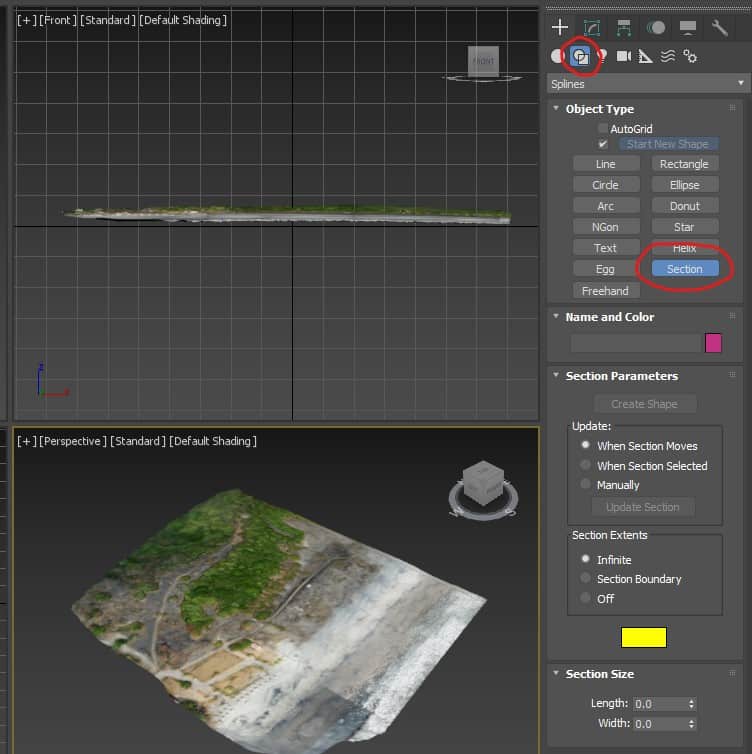
Now go to Perspective View and click on the terrain center, and holding the mouse left button drag it to the outside of the Terrain. Once outside – you can let go the mouse button. Your first section is in place.
Your screen with your first new Section should look similar to this one:

Notice that the terrain is enclosed entirely by the 3dsMax Section.
Viewport Size Settings
While working in 3ds Max you might want depends on the situation have your current viewport maximized. To maximize your current viewport click Alt+W while your mouse is inside the vIewport you want to maximize. To restore the viewports use again the shortcut Alt+W.
Adjusting the Position of the Section
To adjust the section’s position, select the Select And Move icon from the menu or use a shortcut (W).
By dragging the yellow square of the XY you can position your section in perfect spot. By dragging X or Y arrow you can move your section just in your arrow direction.
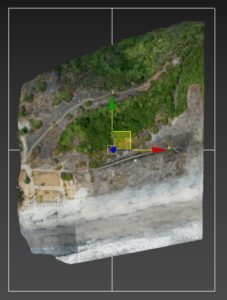
Adjusting the Size of the Section

If you didn’t make the section of proper size, you can adjust it’s size by using Select And Uniform Scale command. Use it similarly to Select And Move command by dragging by arrows or yellow triangle in the middle.

Drawing Rectangle Object For Your Section
Now it’s time to draw an rectangle on our section which will intersect with our terrain and slice it where we need it to slice.
STEP 1
Set your Snap to 2.5:

STEP 2
Left click on the 2.5 icon to activate the Grid and Snap Settings, make sure the Vertex option is selected:
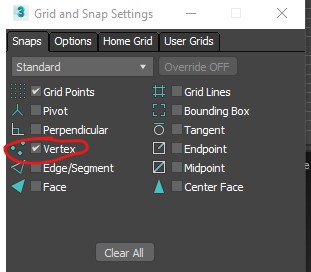
STEP 3
From the menu on the right, choose Rectangle option:
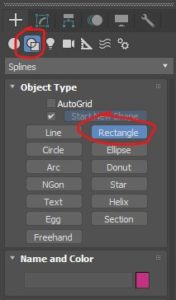
STEP 4
Pick an extreme point of your terrain, and holding the left button of your mouse draw a rectangle:

STEP 5
Change your Snap to 3:

STEP 6
Snap the rectangle to the lowest point of your Terrain:
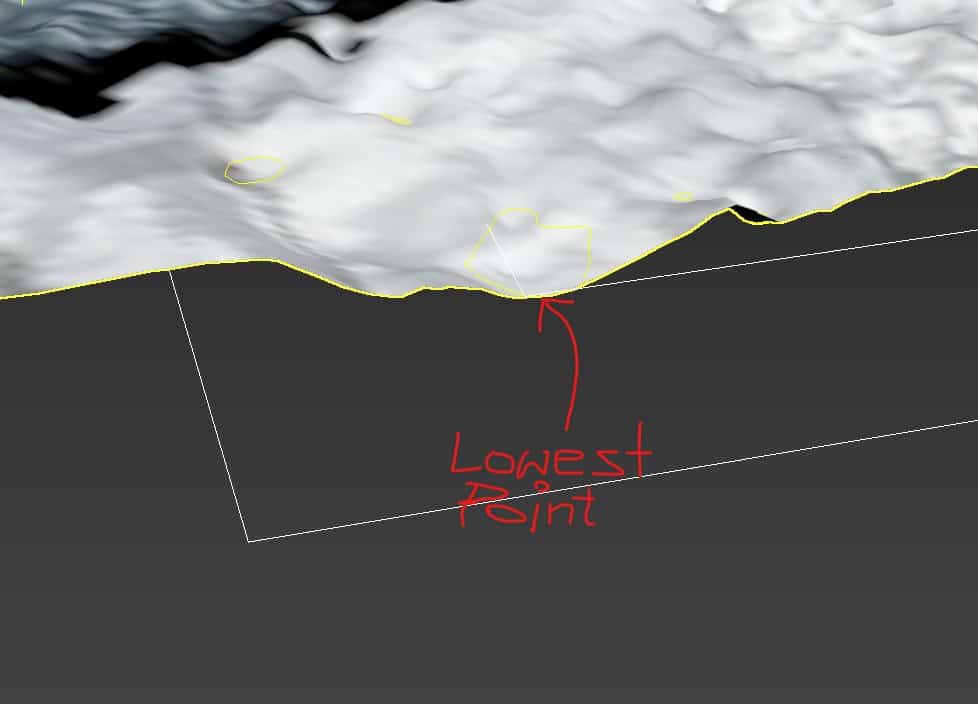
STEP 7
Adjust the position of the rectangular so it encloses entire terrain:
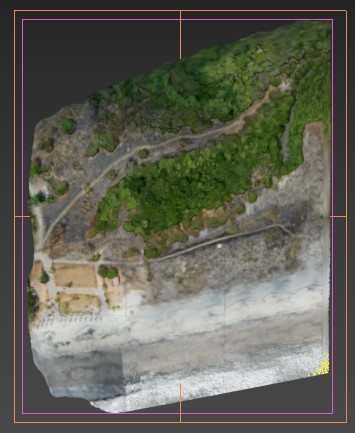
STEP 8
Before you proceed any further, at this point you need to make sure you are working in the proper project units. You can view and change your project units from the Menu > Customize > Unit Setup:
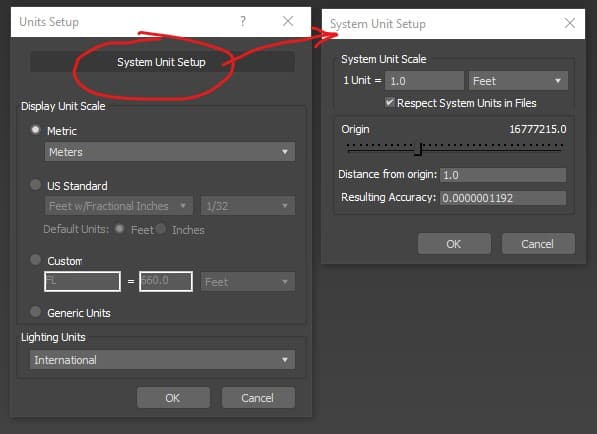
STEP 9
Select both: Section and Rectangle. Go to Tools and select Array:
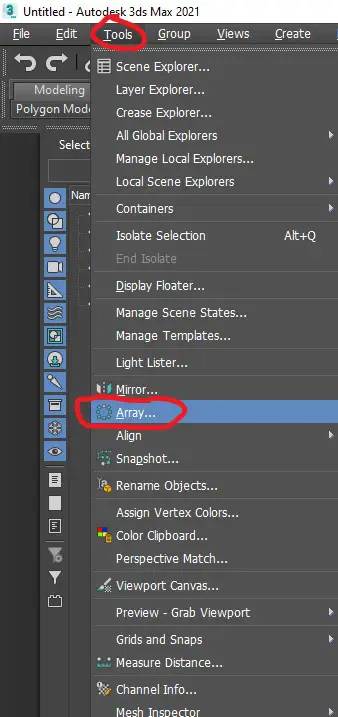
STEP 10
Select both: Section and Rectangle. Go to Tools and select Array. Then in the dialog box adjust the settings and turn on the Preview button to see the changes. You can adjust the distance between the consecutive layers, the layers quantity:
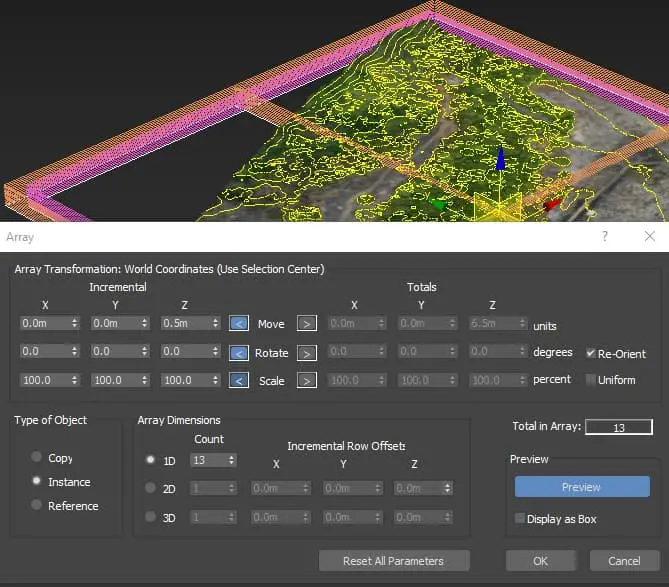
Once you are happy with the settings, hit OK button to confirm that this is what you want.
When you switch to Wireframe view, you can see layers of your topo in yellow on the surface of your terrain shell:
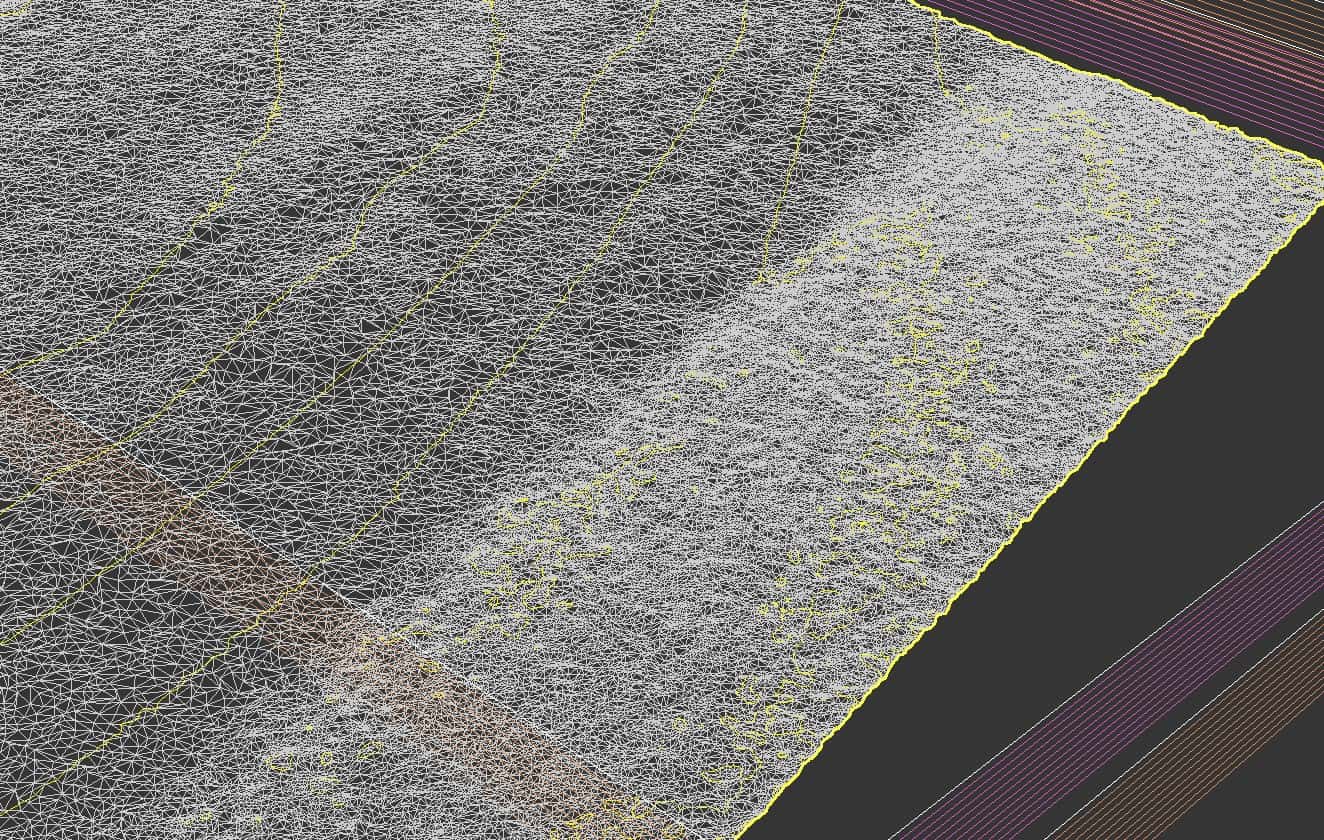
STEP 11
Now select the first Section from the bottom and go to Modify tab and click Create Shape and press Delete to remove this Section:
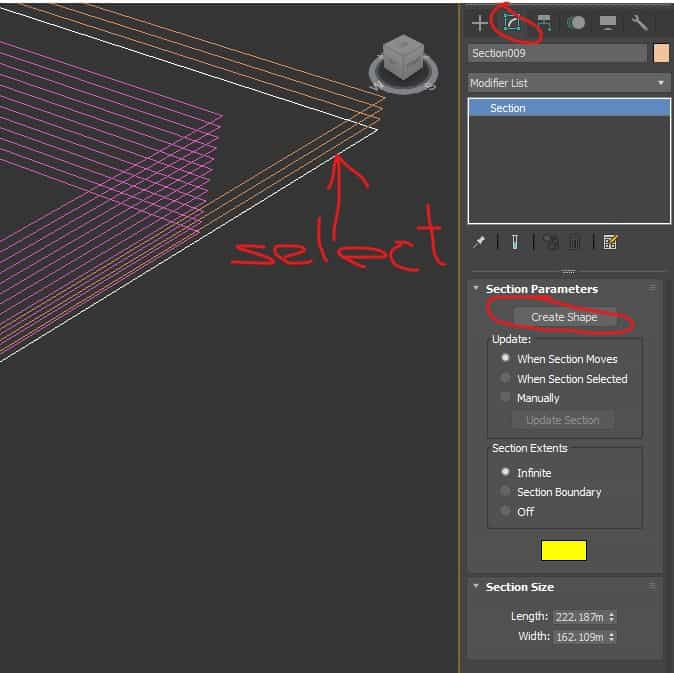
Your Terrain Layers are completed at this point:
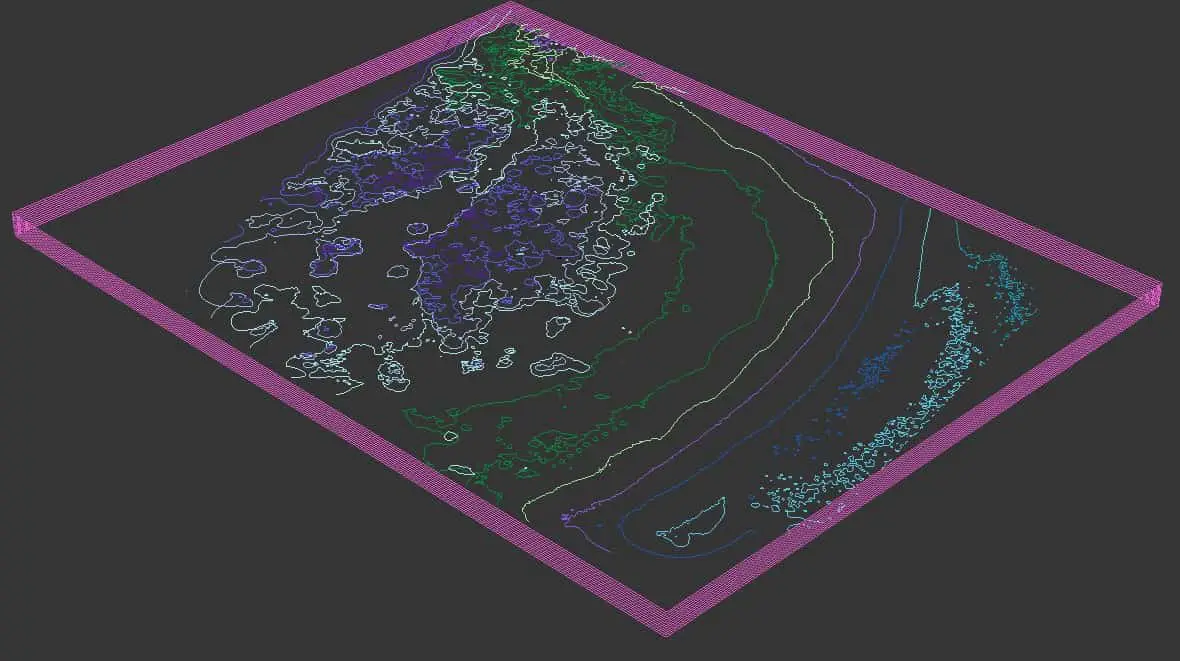
STEP 12
You can hide or delete the Rectangles (in Magenta above). Select all topography lines and go to FILE > EXPORT. The dialog box will open. From the available file types choose .dwg:
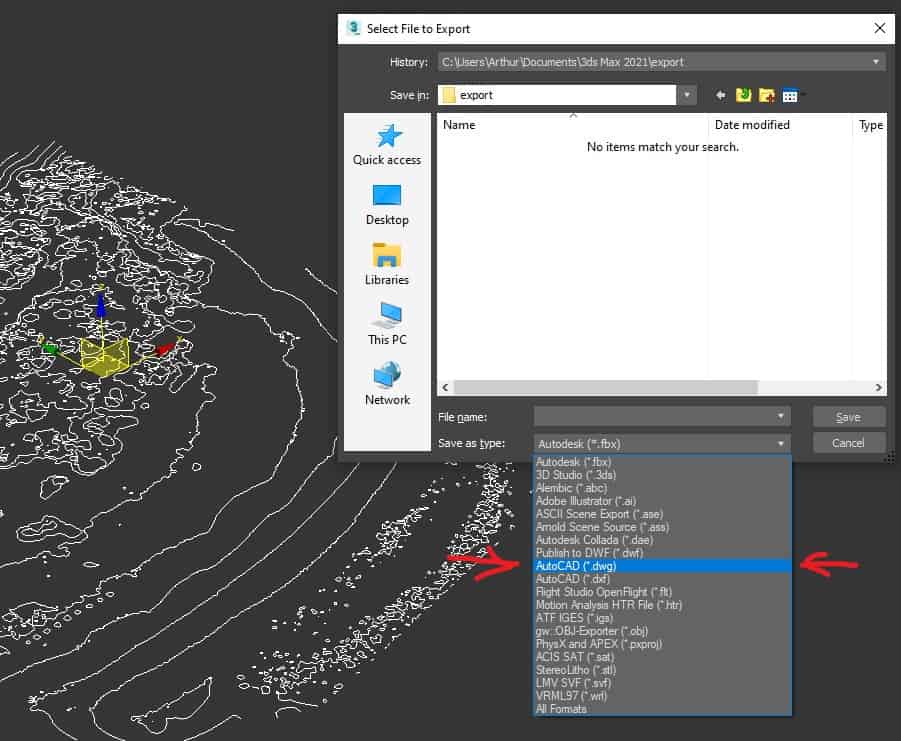
When exporting to .dwg:
- Select Your CAD version.
- check Selected Objects
- check Skip Hidden Objects
Click OK
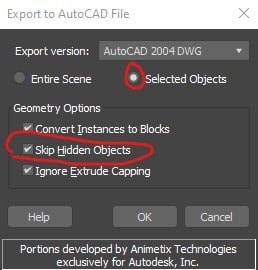
The .dwg file can be opened in AutoCAD application or imported into Autodesk Revit.
